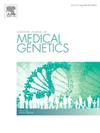The VASCERN PPL working group patient pathway for primary and paediatric lymphoedema
Abstract
Lymphoedema is caused by an imbalance between fluid production and transport by the lymphatic system. This imbalance can be either caused by reduced transport capacity of the lymphatic system or too much fluid production and leads to swelling associated with tissue changes (skin thickening, fat deposition). Its main common complication is the increased risk of developing cellulitis/erysipelas in the affected area, which can worsen the lymphatic function and can be the cause of raised morbidity of the patient if not treated correctly/urgently. The term primary lymphoedema covers a group of rare conditions caused by abnormal functioning and/or development of the lymphatic system. It covers a highly heterogeneous group of conditions. An accurate diagnosis of primary lymphoedema is crucial for the implementation of an optimal treatment plan and management, as well as to reduce the risk of worsening. Patient care is diverse across Europe, and national specialised centres and networks are not available everywhere. The European Reference Network on Rare Multisystemic Vascular Diseases (VASCERN) gathers the best expertise in Europe and provide accessible cross-border healthcare to patients with rare vascular diseases. There are six different working groups in VASCERN, which focus on arterial diseases, hereditary haemorrhagic telangiectasia, neurovascular diseases, lymphoedema and vascular anomalies. The working group Paediatric and Primary Lymphedema (PPL WG) gathers and shares knowledge and expertise in the diagnosis and management of adults and children with primary and paediatric lymphoedema. The members of PPL WG have worked together to produce this opinion statement reflecting strategies on how to approach patients with primary and paediatric lymphoedema. The objective of this patient pathway is to improve patient care by reducing the time to diagnosis, define the best management and follow-up strategies and avoid overuse of resources. Therefore, the patient pathway describes the clinical evaluation and investigations that lead to a clinical diagnosis, the genetic testing, differential diagnosis, the management and treatment options and the patient follow up at expert and local centres. Also, the importance of the patient group participation in the PPL WG is discussed.

 求助内容:
求助内容: 应助结果提醒方式:
应助结果提醒方式:


